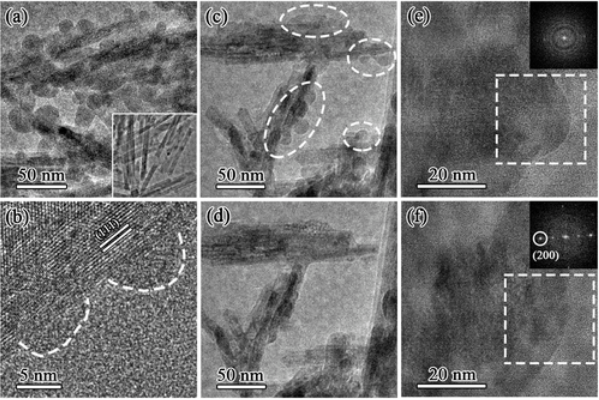A recent student revealed a MnOX /CeO2 nanorod catalyst with an unprecedented performance in the 1000 h test under a low temperature (523 K). This marks a milestone in practical applications in low‐temperature selective catalytic reduction (SCR) of NOX.
Nitrogen is one of the major components of air. Where there is combustion in industry, nitrogen oxides will be inevitably released. Such "hostile" pollutants may bring about an array of environmental problems (such as smog, acid rain, and ozone depletion) and thus pose a severe hazard to human health. It is therefore of considerable significance to remove them from air. These pollutants are usually removed in the selective catalytic reduction (SCR) process. In the 1980s, SCR began to be employed in industrial scenarios. It proved to be a remarkable postcombustion technique for NOX emission control, but it was far from eligible for the low-temperature NOX removal in steel, cement, glass, and other important industries, where the temperature of flue gases was normally between 450 and 523 K.
Against this backdrop, the research team led by Prof. WANG Yong and Prof. YANG Hangsheng at the Zhejiang University School of Materials Science and Engineering developed a novel catalyst for the low-temperature selective catalytic reduction of nitrogen oxides in a stable and efficient manner at low temperatures. Their study is published on the Sept. 2 issue of the journal of Advanced Materials.
The partial or total deactivation of a catalyst by a chemical compound is referred to as "catalyst poisoning". In the NOX reduction phase, residual SO2 often exerts a debilitating effect. Why are catalysts poisoned? Scientists observed this phenomenon through an in situ environmental transmission electron microscopy (ETEM) and gained a perspicacious understanding of its underlying mechanism.

In situ TEM observation of CeO2(NR) under atmospheric pressure in nanoreactor.
The transmission electron microscopyimage showed the CeO2 nanorods (NR) with an average diameter of about 10 nm and good crystallinity. "These unevenly distributed bumps get in the way of the contact between the catalyst and the exhaust gas, thereby hindering the catalytic effect," said WANG Yong.
In the field of catalytic reduction, MnOX is far superior to CeO2 in terms of catalytic performance. However, MnOX is susceptible to SO2. Once it is exposed to SO2, its performance will plummet. Although CeO2 is inferior to MnOX, it is free from "poisoning". Thus, scientists designed a new catalyst by loading MnOX clusters on the surface of CeO2 nanorods (NR).

Schematic of the proposed mechanism
This state-of-the-art catalyst for removing NOX at low temperatures via NH3-SCR technique in the presence of SO2 was realized by establishing a dynamic equilibrium between the formation and decomposition of sulfate over well-designed MnOX/CeO2 catalysts, which minimized the catalyst deactivation and thus kept their high-performance with the most outstanding resistance to SO2. This new approach will usher in a universal and facile method to solve other deactivation problems in the catalysis process.






